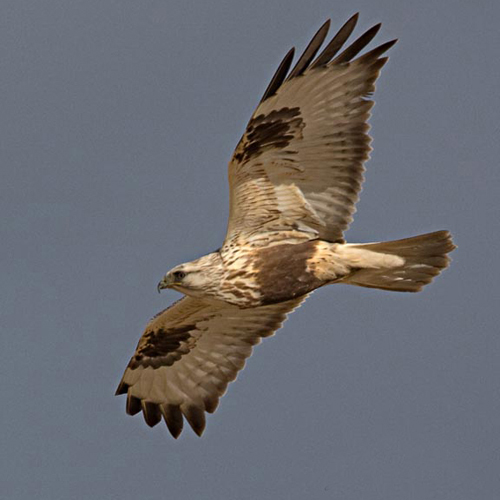General Description
This winter visitor is a large, soaring hawk named for the feathers that extend down its legs, an adaptation to its northern habitat. Rough-legged Hawks are variable in plumage, with light and dark color phases and variations in between. Dark phases account for only ten percent of western Rough-legged Hawks. Adults are generally mottled light-and-dark underneath, with dark patches at the wrists. Seen from below, the tails of both phases appear light with a dark terminal band. Seen from above, both phases appear mostly dark, but the light phase shows a light tail with a dark terminal band, and the tail of the dark phase appears dark all over. The adult male can have several dark bands at the tip of its tail as compared to the female, which only has one band. The light phase has a distinctive light-colored head, in contrast to its dark upperside. The Rough-legged Hawk's bill and feet are relatively small.
Rough-legged Hawks are Uncommon in Western Washington from November-March.Habitat
Rough-legged Hawks nest in the Arctic, both in the Old and the New World, mostly in tundra. They also use the northern edge of boreal forest. In winter, they inhabit open fields, plains, marshes, and farmland.
Behavior
They are usually found singly or in pairs; only rarely are they seen in large groups. They hunt by watching from a perch. Because of their small feet, they are able to stand on a thin perch. They patrol low over the ground, or hover high over a field, watching for movement, then swooping down, talons first, to grab prey.
 |
| Light Morph Adult |
No comments:
Post a Comment